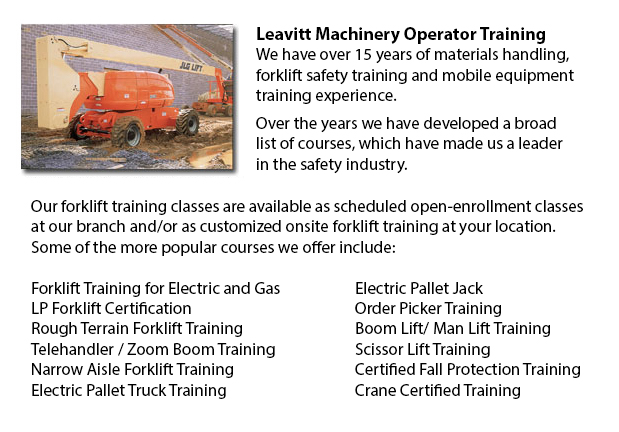
Boom Lift Safey Training Prince Albert - Boom lifts fall under the category of elevated work platform or aerial lifting device. Most usually utilized in warehousing, construction and industry; the boom lift is really versatile that it can be used in almost whatever setting.
The elevated work platform is utilized in order to enable access to heights which were otherwise not reachable making use of other methods. There are risks inherent when making use of a boom lift device. Employees who operate them have to be trained in the right operating methods. Accident avoidance is vital.
Boom Lift Training Programs cover the safety factors involved in boom lift operation. The program is best for individuals who operate self-propelled elevated work platforms and self-propelled boom supported elevated work platforms. Upon successfully completing the course, participants will be given a certificate by someone authorized to verify finishing a hands-on assessment.
Industry agencies, local and federal regulators, and lift manufacturers all play a part in providing information and establishing standards to be able to help train operators in the safe use of elevated work platforms. The most essential ways in avoiding accidents connected to the use of elevated work platforms are the following: wearing safety gear, performing site assessment and checking machinery.
Important safety factors when operating Boom lifts:
Operators stay away from power line, observing the minimum safe approach distance (MSAD). Voltage can arc across the air to be able to find an easy path to ground.
So as to maintain stability when the platform nears the ground, a telescopic boom should be retracted prior to lowering a work platform.
Individuals working from the platform of a Boom lift must tie off in order to ensure their safety. Safety harness and lanyard combinations should not be attached to any anchorage other than that provided by the manufacturer, never to other poles or wires. Tying off may or may not be needed in scissor lifts, depending on particular employer guidelines, job risks or local regulations.
The maximum slope would be specified by the manufacturer. Workers should avoid working on a slope, if possible. When the slope exceeds recommended situation, the lifting device must be transported or winched over the slope. A grade could be simply measured by laying a minimum 3-feet long straight edge or board on the slope. Afterward a carpenter's level could be laid on the straight edge and the end raised until it is level. The per-cent slope is attained by measuring the distance to the ground (the rise) and dividing the rise by the length of the straight edge. After that multiply by 100.
-
Zoom Boom Training Prince Albert
Zoom Boom Training Prince Albert - Zoom Boom Training focuses on correctly training potential operators on variable reach forklifts. The training objectives include gaining the understanding of the machine's physics and to be able to define the job o... More -
Bucket Truck Training Prince Albert
Bucket Truck Training Prince Albert - The Vehicle-Mounted Aerial Work Platform or also called bucket truck training program is intended to reduce the chance of incident and personal injury when working with or in close proximity to bucket trucks by e... More -
Aerial Lift Training Prince Albert
Aerial Lift Training Prince Albert - An aerial work platform is a mechanized access platform. This device provides access to otherwise not accessible places for people or equipment. Likewise called an aerial device or elevating work platform, the mac... More -
Overhead Crane Ticket Prince Albert
Overhead Crane Ticket Prince Albert - The overhead crane is a common heavy machinery utilized in industrial settings. This particular machine is known as a bridge crane and comprises parallel runways spanned by a traveling bridge. The hoist is the co... More -
Scissor Lift Ticket Prince Albert
Scissor Lift Ticket Prince Albert - Scissor lifts have greatly benefited construction operations because the task that used to need a lot of effort and lots of people, can now be accomplished using the scissor lift and just one individual, the operat... More -
Manlift Training Prince Albert
Manlift Training Prince Albert - Different manlift training programs include the review and content of manlift devices. An essential part of the program is the practicum where students demonstrate their knowledge and practical ability to operate the... More -
Skid Steer Loader Training in Prince Albert
The engine powered skid-steer loader consists of a rigid and small frame, equipped along with lift arms which could attach to various industrial attachments and tools to be able to perform various labor saving tasks. Normally, skid-steer loaders are... More -
Crane Training School Prince Albert
Crane Training School Prince Albert - We provide industry relevant programs in our crane training school. The course will provide our trainees with learning outcomes matching the existing industry demands. Our small class sizes combine theory and han... More

Forklift Training Prince Albert
TOLL FREE: 1-888-254-6157
Prince Albert, Saskatchewan
forklifttrainingprincealbert.com
Email Us
About Us


